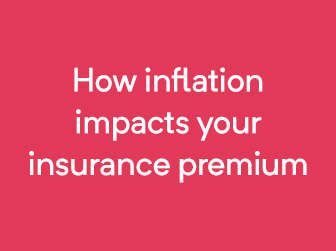It’s a practice that goes way back with some insurance companies, and some have kept it as part of their checklist. As time goes, insurance providers have to continuously maintain and update standards and re-evaluate risks. However, there are ways to keep your premiums low in other ways.
So, why would the colour of your car affect your insurance premium? We’ve covered the basics and then some.
Why some Insurance companies charge higher premiums on the colour of your car
There’s a difference between what colours mean for a sale and what they mean for insurance. Insurance myths go as far back as the personification each colour inherited over time. For example, red cars were thought to represent aggressive driving and were (supposedly) more susceptible to traffic fines—which couldn’t be further from the truth.
Yes, the colour of your car will have an influence on your premium, but not in the way that you think.
What is a Car Insurance premium?
A Car Insurance premium is the amount of money that an individual or business must pay to an insurance company for coverage over a specified period, usually on a monthly, quarterly, or annual basis. This payment ensures that the insured vehicle is covered by the terms outlined in the insurance policy, which can include coverage for accidents, theft, damage, and other potential risks.
Understanding the checklist
There are a number of factors that insurers take into account when determining your premium. Things like parking location, age, claim history, driving habits, likelihood of theft, and vehicle safety features are what you can expect from a typical checklist. Pricing comes down to the type of coverage you choose whether it’s comprehensive, third-party fire and theft or third-party only.
How colour affects your insurance premium
It’s not just the fact that your vehicle colour helps keep you visible to others (especially at night), but the maintenance and repair costs as well as the availability of paint that matters.
Some insurance companies have shared reasons why premiums would cost more:
- Standard colours or base colours like white and silver would be cheaper than others as there’s more available.
- Where dark-coloured vehicles are concerned, nighttime driving poses more risk to accidents than lighter vehicles, hence a higher premium.
This may be one reason why so many South Africans opt for white vehicles; it could also be the fact that a lighter colour doesn’t show as much dirt and debris as much as darker-coloured vehicles.
Your premium will also consider any alterations that you’ve made to the original paintwork such as wrapping your vehicle or custom paint job. In general, car colour isn’t a concern for high premiums.
Regulatory framework
Insurance standards are rooted in transparency and fairness. As a means to remove any discriminatory practice, premiums should only be considered using factors that are related to the insured risk.
Insurers should consider the colour of a car unless they can justify that it directly impacts risk. Policies will continue to be reviewed and updated, remaining relevant and effective when it comes to safeguarding consumers and ensuring fair practices are met.
If you have a vehicle that’s not part of the standard colour checklist, you can save on premiums by focusing on things that are within your control: keeping your driving record clean, choosing your vehicle, installing safety devices, increasing your excess, and more.
BMW iX SUV
When will the new Golf GTI launch in South Africa?


